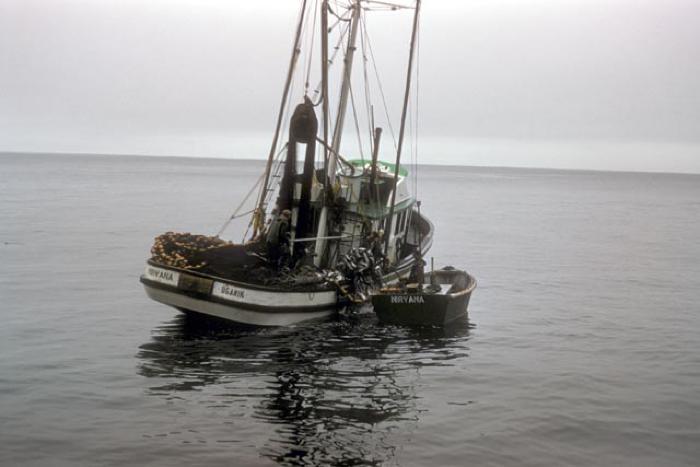Fishing Boat — Parag’autaq (N), Parag’uutaq (S)

Visit any dock in the Kodiak Archipelago and you will find an array of fishing vessels. Skiffs, seiners, tenders, and crabbers are part of the rhythm of life in Kodiak and its Alutiiq communities.
Over the centuries, Alutiiq people have used many types of fishing boats. Before the arrival of Westerners, Alutiiq hunters pursued fish from sleek ocean-going qayat (kayaks). As Western vessels replaced Native boats, Alutiiq people learned to fish from wooden dories. From these boats, powered by rowing or by small sails, fishermen caught cod with hand lines tied to the gunnels. Other people fished for salmon with seine skiffs. Also propelled with oars, these boats were fourteen feet long and they could carry thousands of pounds of fish.
Canneries had steam-powered launches, but in general, motorized boats began to impact fishing practices in the late 1930s, as small outboards became available. In those days, a ten-horse kicker cost about $800! Power dories, owned mostly by canneries, helped fishermen tow nets and dories loaded with salmon, but they were often used for traveling. In the decade following World War II, more Alutiiq families began to acquire fishing boats. Boatbuilding became a profitable winter activity. Craftsmen made skiffs, dories, and even purse seiners from local spruce.
